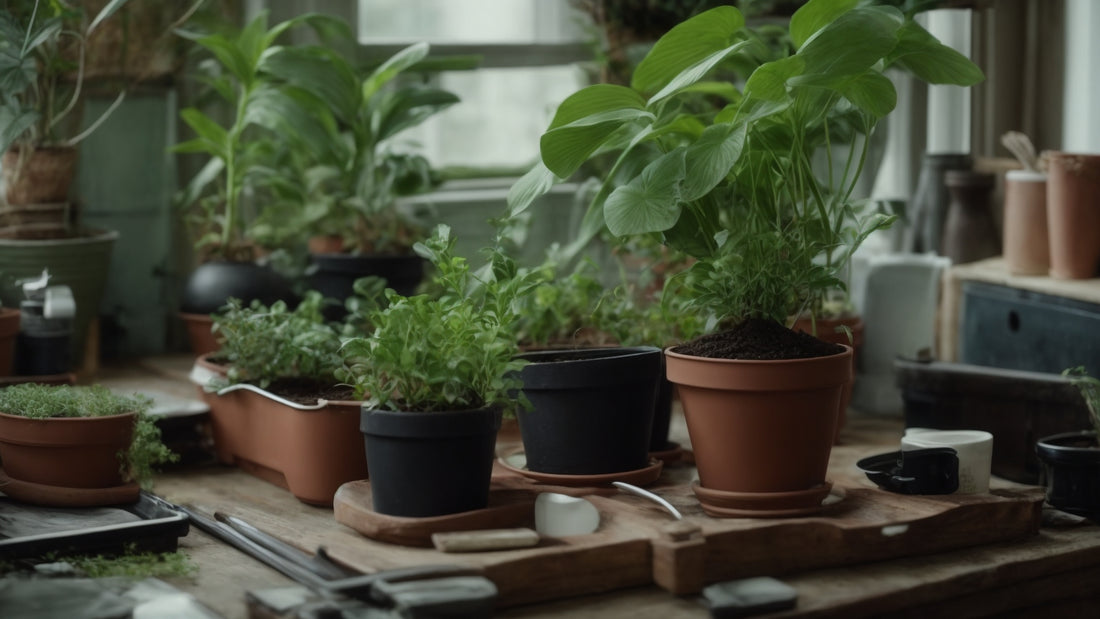
Repotting Plants: A Comprehensive Guide for Beginners
Share
Why Repotting is Important
Repotting your plants is an essential part of plant care, and it's a crucial step in ensuring their health and longevity. Over time, plants will outgrow their pots, and their roots will become cramped and rootbound. This can lead to a number of problems, including:
- Stunted growth
- Yellowing leaves
- Wilting
- Increased susceptibility to pests and diseases
Repotting allows you to give your plants fresh, nutrient-rich soil and more space for their roots to grow. This helps them thrive and produce beautiful foliage and blooms.
When to Repot
The best time to repot your plants is in the spring or early summer, when they are actively growing. However, you can repot them at other times of the year, as long as you are careful not to disturb the roots too much.
Here are some signs that your plant may need to be repotted:
- Roots are growing out of the drainage holes
- The plant is becoming top-heavy and unstable in its pot
- The soil is constantly dry, even after watering
- The plant's growth is stunted or slow
How to Repot Your Plants
Repotting is a relatively simple process, but it's important to follow these steps to ensure the success of your plant:
1. Choose the Right Pot
Select a pot that is only slightly larger than the original pot. A pot that is too large can lead to overwatering and root rot. The new pot should also have drainage holes to prevent water from accumulating in the bottom.
2. Prepare the New Pot
You may opt to fill the bottom of the new pot with a layer of drainage material, such as pebbles or gravel. This will help to ensure good drainage. It is not required, however, as long as your new pot has drain holes. Also, don't forget a watering tray to catch the water that comes out the bottom when watering if your pot does have drain holes.
3. Remove the Plant from its Old Pot
If your pot is flexible gently squeeze the sides together. After turning the pot around and squeezing it a few times the plant should easily come out. If your pot is hard gently tap the bottom of the old pot to loosen the plant. If the plant is still stuck, use a knife or trowel to carefully separate the roots from the sides of the pot. Once the plant is loose, carefully lift it out of the pot.
4. Examine the Roots
Look over the roots. If they are extremely compacted together, you may need to very gently loosen them up slightly by teasing them apart with your fingers. This will help the roots to grow more freely in the new pot. You may also skip loosening the roots if you do not want to disturb them. If you notice any browning or mushy roots, remove those by clipping back with sterile scissors to a section of the root that still feels firm when you squish it.
5. Add New Soil
Put a layer of soil in the bottom of the pot and then place the plant in the new pot Fill the space around the sides with fresh potting mix. Be sure to leave about an inch of space between the top of the soil and the rim of the pot. Lightly press the soil around the roots to ensure that the plant is secure.
6. Water Thoroughly
After repotting, water your plant thoroughly to help the roots settle into the new soil.
Tips for Repotting
Here are a few additional tips for success when repotting your plants:
- Use a potting mix that is appropriate for the type of plant you are repotting. For example, cacti and succulents require a well-draining mix, while tropical plants prefer a richer, more moisture-retentive mix.
- Avoid overwatering after repotting. Allow the top inch of soil to dry out between waterings. This will help to prevent root rot.
- Be patient. It may take some time for your plant to adjust to its new pot and start growing again.
Repotting is a vital part of plant care. By following these steps, you can ensure that your plants thrive and continue to bring beauty and joy to your home.
